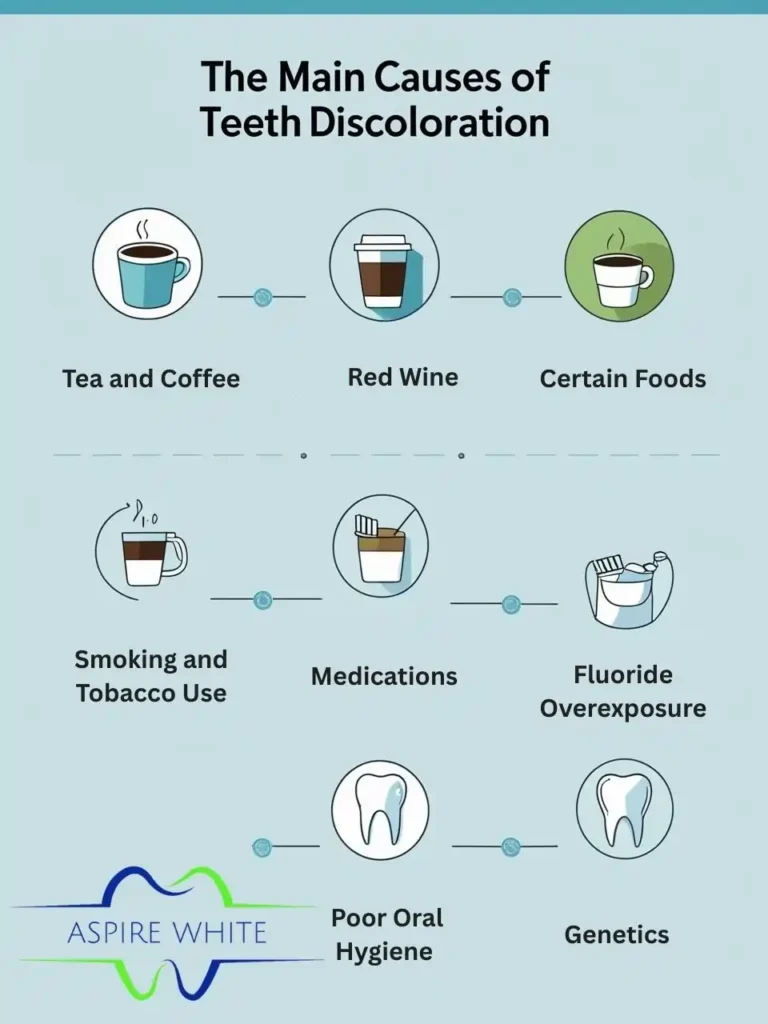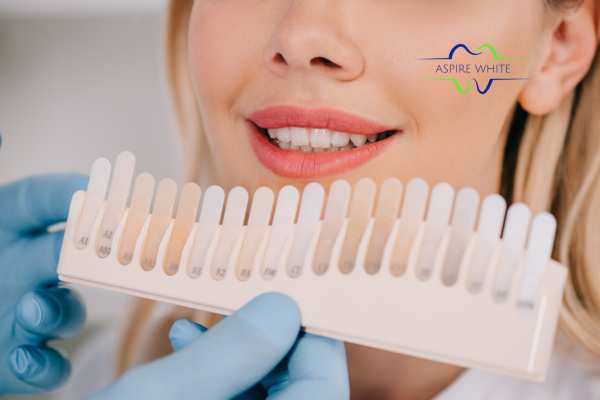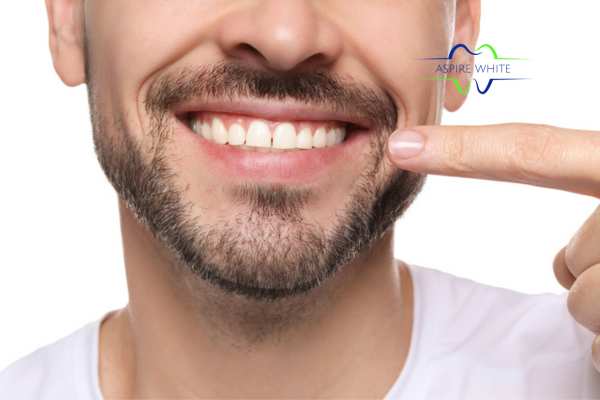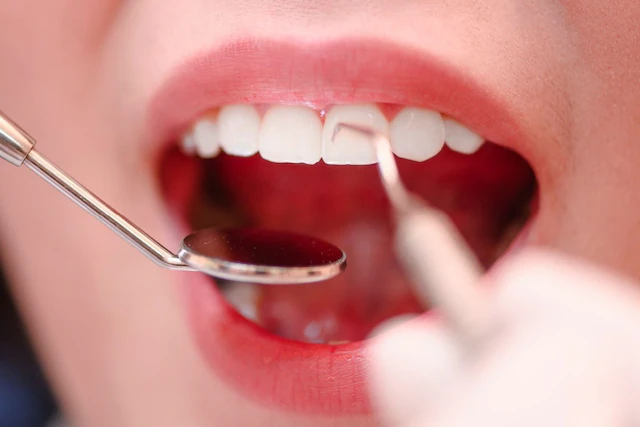When it comes to brightening your smile, the options can feel overwhelming. From whitening toothpaste and strips to professional laser treatments, each method promises results — but not all are created equal.
At Aspire White Swindon, we focus solely on at-home laser teeth whitening. This safe and effective option delivers professional-level results without you needing to set foot in a clinic. See Our Laser Teeth Whitening and Receding Gums: Challenges and Considerations
Unlike store-bought whitening strips, which can give uneven results, laser whitening uses advanced light technology to speed up the removal of stains from the surface of your teeth.
This means faster results, often visible in just one session, with less mess and more predictability. While some methods only remove surface stains, laser whitening penetrates deeper into the enamel, tackling those stubborn discolourations caused by years of tea, coffee, wine, or smoking.
Which Teeth Discolouration Issue Is Holding Me Back, and Why Does It Matter Swindon
Not all stains are the same — and that’s why knowing what’s behind your discolouration is key. Some stains, called extrinsic stains, appear on the surface from food, drinks, or smoking.
Others, known as intrinsic stains, develop inside the tooth, often due to ageing, certain medications, or trauma.
If you’re not sure which type you have, the wrong whitening method might leave you disappointed. Aspire White’s Swindon laser treatment works brilliantly on most common extrinsic stains, restoring a naturally bright shade.
It can also help improve the look of mild intrinsic discolouration. Identifying your stain type ensures you get the most effective treatment — and prevents wasted time and money on solutions that won’t work.
How Do Natural Remedies Like Baking Soda or Coconut Oil Work — And Are They Worth It?
It’s tempting to try the “natural” route — after all, baking soda and coconut oil are easy to find in your kitchen. Baking soda is mildly abrasive, so it can scrub away surface stains, while coconut oil pulling may help reduce bacteria that cause plaque.
The problem? These remedies often take months to show subtle results, and they won’t tackle deeper discolouration. Overuse of baking soda can also wear down enamel, leaving your teeth more sensitive.
At Aspire White Swindon, we believe natural remedies can be part of your daily care routine, but if you want noticeable, safe, and quick results, our at-home laser whitening is a more effective choice. It brightens several shades in just one session while keeping your enamel protected.
How Much Whitening Power Do I Need Without Hurting My Enamel?
The goal is a brighter smile — but never at the expense of your enamel. Overly harsh whitening products can erode enamel, leading to permanent sensitivity. The trick is finding a balance between whitening strength and tooth safety. Check Out Is Whiter Teeth More Important Than Good Dental Health?
Aspire White Swindon combines a premium whitening gel with laser technology to lift away stains while being gentle on your enamel. The gel’s pH balance helps whiten your smile without damaging the natural structure of your teeth.
Our system is tested to deliver visible results with minimal risk, making it a perfect choice if you’re concerned about protecting your teeth while still achieving a radiant smile.
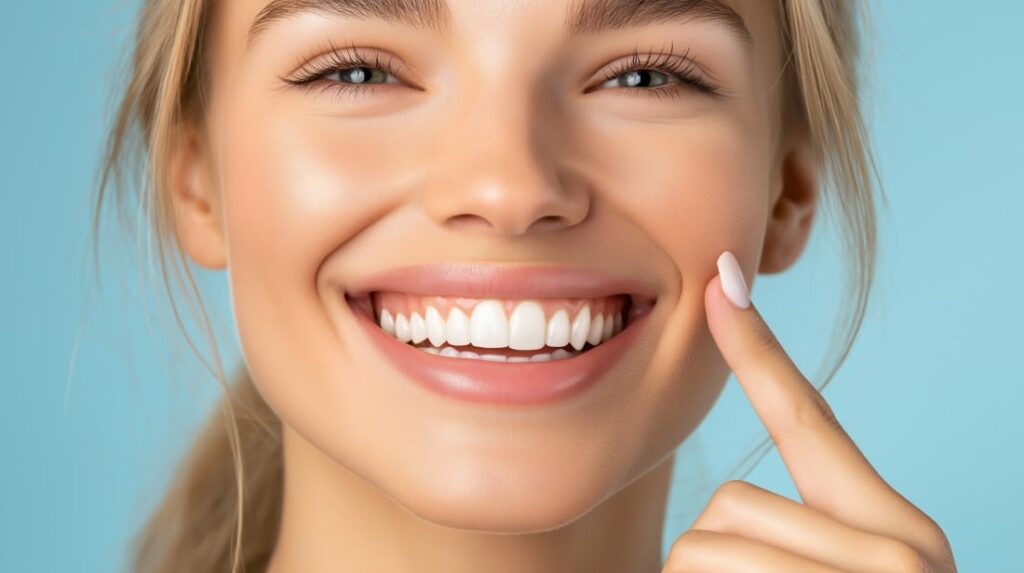
What Are the Hidden Risks — Tooth Sensitivity or Gum Damage — I Should Know About?
Any whitening method, if misused, can cause side effects. The two most common are tooth sensitivity and gum irritation. Sensitivity happens when whitening agents temporarily expose microscopic channels in the enamel, while gum irritation occurs if the whitening gel touches soft tissue.
At Aspire White Swindon, our at-home kits are designed to minimise these risks. The trays fit comfortably to keep gel away from your gums, and our gel contains soothing ingredients to reduce post-treatment sensitivity.
We also provide clear aftercare instructions, so you know exactly how to use your kit for the best results without discomfort.
Which Whitening Method Suits My Time, Budget, and Lifestyle Best?
If your life is busy and you can’t commit to repeated clinic visits, an at-home laser whitening kit from Aspire White Swindon can be a perfect fit. It combines professional-quality results with the convenience of doing it in your own home, at a time that suits you.
It’s also more cost-effective than multiple in-office sessions while still providing fast, visible improvement. If you prefer gradual changes, you can spread your treatments over a few days or weeks. If you want quick results for an event, a single intensive session might be all you need.
How Do I Choose Between Quick At-Home Solutions vs. Long-Term In-Office Treatments?
Both options have their place, but it depends on your priorities. In-office treatments are fast and often done in one session, but they can be costly and require appointments.
At-home solutions vary widely in effectiveness — supermarket kits often take longer, while Aspire White’s Swindon laser whitening bridges the gap by giving you clinic-level results from your sofa. Read Here Brighten Your Smile: Teeth Whitening Food Choices
You get both speed and control: quick whitening in just one or two sessions, plus the freedom to top up when needed without booking another appointment.
How Do I Ensure My Dental Work (Veneers, Crowns) Won’t Look Odd Post-Whitening Swindon?
Whitening gels work on natural enamel, not artificial materials.
This means veneers, crowns, and composite fillings will stay the same shade while your natural teeth brighten — which can create a mismatch if your dental work is visible.
At Aspire White Swindon, we recommend a consultation before treatment to assess your current dental work.
If needed, we’ll help you plan a whitening routine that blends your smile naturally, or advise on replacing older restorations after whitening for a seamless look.
What Maintenance Plan Should Aspire White Recommend After My Treatment?
Your bright smile doesn’t have to fade quickly — but it does need maintenance.
After your Aspire White Swindon laser whitening, we suggest:
- Avoiding stain-causing foods and drinks for 48 hours
- Brushing twice daily with a whitening-friendly toothpaste
- Using a straw for coffee or wine to reduce contact with teeth
- Scheduling top-up whitening every 6–12 months for lasting results
We can provide tailored advice depending on your diet, lifestyle, and natural tooth shade, so your results stay fresh for as long as possible.

